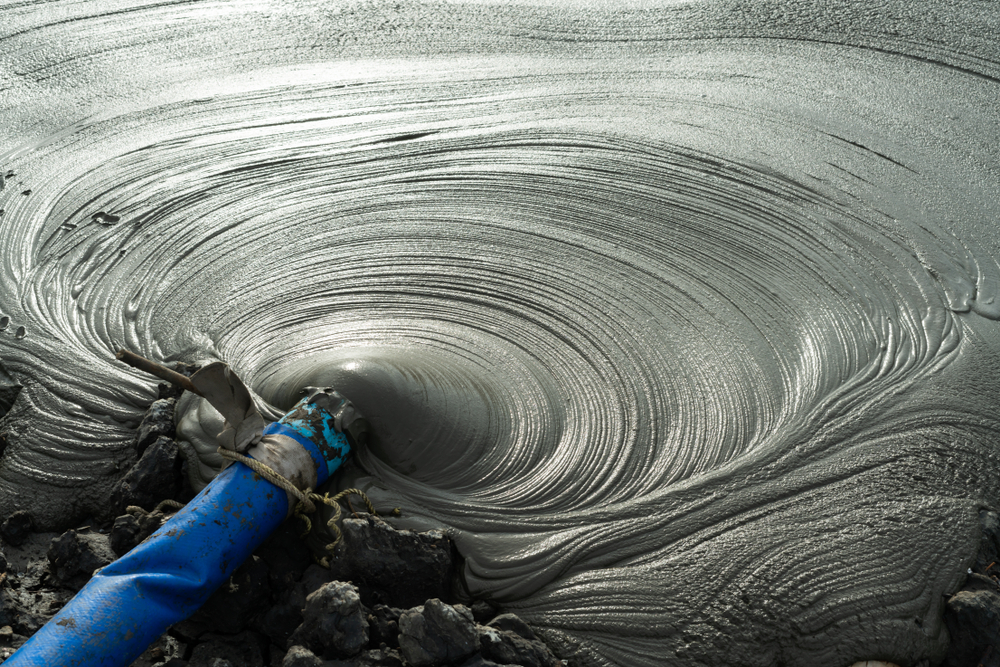Fluid Compatibility with Formation Water Test
The Fluid Compatibility with Formation Water Test is a critical procedure used in the oil and gas sector to evaluate the compatibility of drilling muds or other fluids with formation waters. This test ensures that the fluid used during drilling does not react unfavorably with the formation water, potentially causing emulsions, precipitates, or other undesirable outcomes that can compromise well integrity.
Understanding the interaction between drilling mud and formation water is essential for several reasons:
- To prevent the formation of harmful emulsions which can reduce the mobility of fluids in the reservoir
- To avoid precipitation of unwanted compounds such as barium sulfate or calcium carbonate, which can cause scaling issues
- To ensure that the fluid remains stable over time and does not undergo phase changes leading to operational problems during drilling operations
- To comply with environmental regulations concerning the discharge of drilling fluids into the environment
The test is conducted by mixing a known volume of formation water with the drilling mud. The mixture is then allowed to settle, after which the phases are observed for any signs of emulsification or precipitation. Additionally, rheological properties such as viscosity and yield point may be measured before and after the compatibility test.
The outcome of this test provides valuable insights into the suitability of a particular fluid for use in specific formations. This information is crucial for optimizing drilling operations, ensuring that the most appropriate fluid is selected to enhance productivity while minimizing environmental impact.
| Test Parameters | Methodology | Acceptance Criteria |
|---|---|---|
| Mud and formation water volumes used in test | The ratio of mud to formation water is typically 1:1 by volume. | Standard ratio for compatibility testing, ensuring accurate representation of field conditions. |
| Type of formation water | Pure formation water or a saline solution with similar properties as the expected formation water. | Formation water should be representative of the target reservoir's characteristics. |
| Incubation time | 24 hours at room temperature or as specified in relevant standards. | Adequate time for any chemical reactions to occur, ensuring accurate results. |
The test helps quality managers and compliance officers ensure that the fluids used meet environmental regulations. R&D engineers can use this information to innovate new formulations that are both effective and environmentally friendly. For procurement teams, it provides a basis for selecting suppliers who adhere to these stringent standards.
Scope and Methodology
The scope of the Fluid Compatibility with Formation Water Test encompasses the evaluation of drilling muds or other fluids against formation waters in various geological settings. The methodology involves carefully controlled mixing, incubation periods, and detailed analysis to assess compatibility.
| Scope | Description |
|---|---|
| Formation water types | Inclues freshwater, brackish water, and saline solutions with varying salinity levels. |
| Different drilling muds | Synthetic base fluids, oil-based fluids, water-based fluids, and others as per industry standards. |
For each test, the formation water is mixed with a predetermined volume of the drilling fluid. The mixture is then incubated for 24 hours at room temperature or according to the specified standard. Following this period, the samples are analyzed using various techniques such as phase separation observation, viscosity measurement, and rheological analysis.
The methodology aims to mimic field conditions as closely as possible, ensuring that the results accurately reflect real-world performance. This approach is critical for maintaining operational efficiency and environmental compliance.
Environmental and Sustainability Contributions
- Reduces the risk of emulsions forming in reservoirs, which can lead to reduced oil recovery rates.
- Avoids the precipitation of scale-forming compounds such as barium sulfate and calcium carbonate, thus minimizing environmental impact from scaling issues.
- Ensures that drilling fluids remain stable over time, reducing the frequency of fluid changes during operations.
- Promotes the use of environmentally friendly fluids by identifying those that are compatible with formation waters without causing adverse effects.
The test contributes to sustainable practices by helping to select fluids that minimize environmental impact and enhance operational efficiency. It supports the development of greener technologies within the oil and gas industry, aligning with global sustainability goals.
Use Cases and Application Examples
| Use Case | Description |
|---|---|
| Drilling Fluid Selection | Selects the most appropriate drilling fluid for specific formations, ensuring optimal performance and minimizing environmental impact. |
| Rheological Property Optimization | Optimizes rheological properties of the fluid to enhance flowability and stability during drilling operations. |
| Environmental Compliance | Aids in compliance with environmental regulations by ensuring fluids are compatible with formation waters, thus reducing potential discharge issues. |
In practice, this test is used extensively in the oil and gas sector to ensure that drilling operations proceed smoothly without compromising safety or environmental standards. It plays a pivotal role in the development of new technologies aimed at enhancing efficiency while minimizing ecological footprint.





